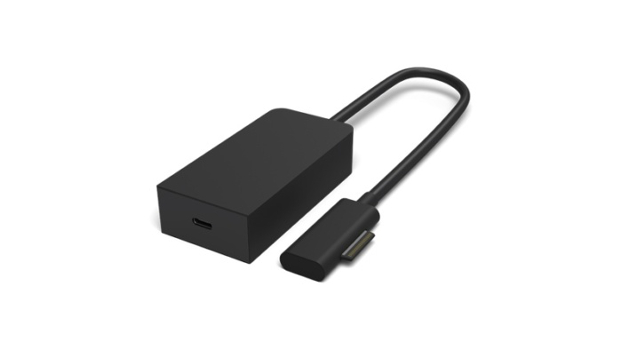If there’s been one weakness of the Surface tablet series, it’s been a lack of available expansion ports – a shortcoming Microsoft addressed with the Surface Dock. But three years after the latest Dock iteration was announced, Microsoft has revealed a new USB-C dongle is in the works, probably conceding that no new Docks are forthcoming.
Tablets like the Surface Pro (2017) boast a single USB 3.1 Type A connector, and that’s largely it as far as expansion is concerned. Microsoft originally addressed Surface’s I/O shortcomings with the Surface Dock, announced in 2015 that included four USB 3.1 Type A ports, a gigabit Ethernet port, an audio-out connection, and a pair of miniDisplayPorts capable of driving 4K-resolution displays. Though it monopolised the tablet’s proprietary Surface Connector interface for power and I/O, the Dock nevertheless provided a solid, dependable I/O solution.
The expected (and at $80, expensive) USB-C Surface dongle will also connect to the single Surface Connector, meaning that you’ll have to unplug the Dock. It will be released on 29 June, The Verge reports, citing Microsoft representatives, who weren’t immediately available to confirm.
That leaves Microsoft seemingly at a crossroads. Both the Surface Connector and USB-C supply power and I/O – but there’s just one Surface Connector built into Surface devices. As USB-C is becoming standard on phones and some laptops, a USB-C dongle allows for a future where you can substitute a Surface-specific power brick with any USB-C charger. (Only the Surface Book 2 includes a USB-C port.)
But because the new dongle will monopolise the Surface connector – and provide only one USB-C connector – that leaves the user at a loss if they want to connect to more than one device. Today, that means buying a USB-C I/O expansion hub. While there are dozens of inexpensive options you’ll still end up with dongles upon dongles.
What’s unclear is whether Microsoft is providing the dongle as a sop to those who are investing in the USB-C interface and peripherals, or whether Microsoft sees USB-C as a true replacement for the Surface Connector. The latter argument is a simple one: For new iterations of the Surface Pro, why not replace its proprietary interface with the neutral USB-C connector?
The wild card in all this is that Microsoft has never really clarified what its Surface Connector can or can’t do, precisely because only Microsoft devices interface with it. The Surface lineup doesn’t publicly support Thunderbolt, the high-speed I/O interface that uses USB-C as a physical connector. USB-C cables that support the USB 3.1 Gen 2 protocol can support up to 10Gb/s of data – but a USB-C cable driven by Thunderbolt can support 40Gb/s, enough for a pair of 4K, 60Hz displays.
If Thunderbolt goes beyond the Surface Connector’s own capabilities, it’s an argument that Microsoft should put the Surface Connector out to pasture and adopt Thunderbolt instead.
IDG News Service








Subscribers 0
Fans 0
Followers 0
Followers